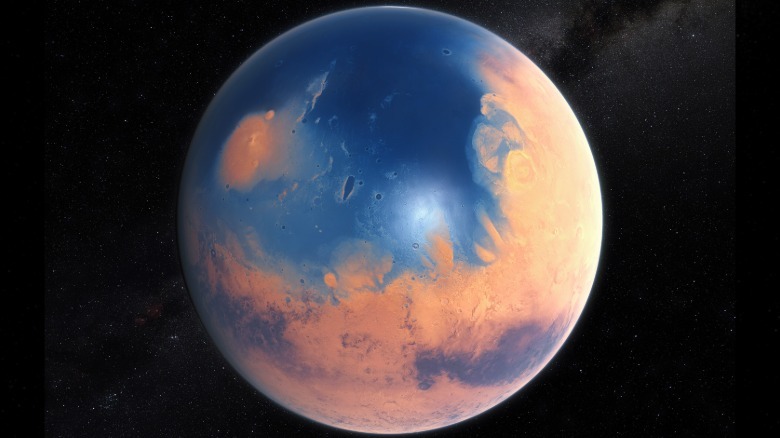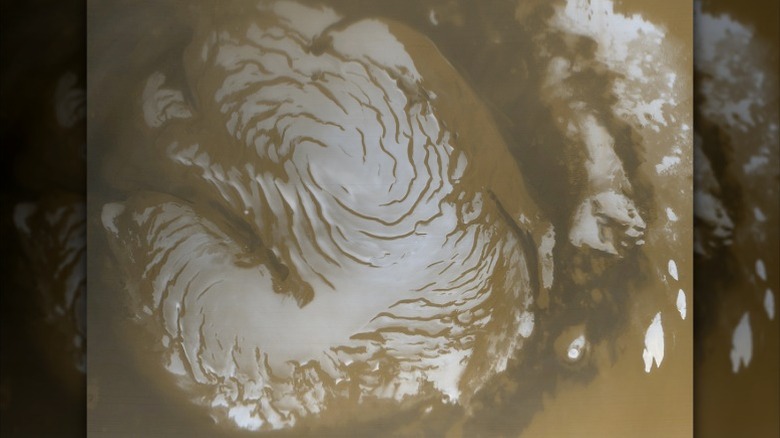Canals On Mars: The Complicated Truth About Martian Climate Change
As one of the five planets visible to the naked eye, Mars has fascinated humanity since before the advent of writing. The earliest observations merely tracked its path through the night sky, but with the invention of the telescope in the early 17th century, its surface could finally be explored. Granted, those early observations were crude and revealed little, but as luminaries such as Huygens and Cassini improved upon the telescope, more details began to resolve.
In the late 19th century, the Italian astronomer Giovanni Schiaparelli inflamed the world's imagination with his claim to have seen long, straight channels (mistranslated as "canals" in English) on the surface of Mars. These channels were seen by other astronomers and were thought by some to be indicative of intelligent life and flowing water on the Martian surface. However, when larger telescopes were aimed at Mars in the early 20th century, the channels were no longer visible.
By the mid-20th century, the idea of water flowing through channels on the planet's surface had been thoroughly debunked. But that all changed when the Mariner 9 probe arrived at Mars in 1971 and showed geological features that looked similar to water-carved canyons and rivers here on Earth, revealing that the climatological history of Mars was much more complex than anyone thought.
Did early Mars have an ocean?
It's hard to know anything for certain about the early history of Mars, but educated guesses can be made thanks to the fact that Mars doesn't have plate tectonics. In fact, while Mars and Earth have a few things in common, this isn't one of them. On Earth, the ground is constantly being recycled and made anew, and on Mars, much of the surface is exactly as it was billions of years ago. It's from this window into the past that researchers are able to deduce what the early Martian climate might have been.
The earliest period of Martian history is known as the Noachian period, and it lasted from about 4 billion years ago to 3.5 billion years ago. Features left over from this era of Martian history hint at a climate radically different from what can be seen today. In particular, there are large valley networks in the Noachian landscape that were almost certainly carved by running water.
From this and other evidence, scientists can conclude that Mars had liquid water in the distant past, and therefore, it must have had an atmosphere conducive to liquid water. What form this took is still being debated. Some posit that Mars was a cold world with equatorial waters, while others assert that early Mars was warm and wet, and it may have even had an ocean in the northern hemisphere.
[Featured image by ESO/M. Kornmesser/N. Risinger (skysurvey.org) via Wikimedia Commons | Cropped, scaled, and mirrored | CC BY 4.0]
The end of Mars' magnetic field
The event that set the Martian climate on its inexorable course to becoming the dry, dusty world it is today was the cooling of its metallic core and the subsequent death of its magnetosphere. Mars' small size and distance from the sun meant that it didn't have enough heat to sustain the internal convection needed to generate planetary magnetism.
According to an article published in Science Advances, this event happened early in the Noachian period, but the full consequences wouldn't be felt for billions of years. A magnetosphere is what keeps a planet's atmosphere from being stripped away by solar winds (it's the same thing that protects the Earth from harmful solar flares). Without it, Mars' carbon dioxide atmosphere was either blown away into the inky depths of space or locked into the surface in the form of carbonate minerals.
Without its atmosphere, the temperature and pressure on Mars steadily dropped. As the temperature lowered, the surface water froze, and without the pressure of the atmosphere, liquid water boiled away while any ice not locked underground sublimated into vapor. These processes are ongoing, and today, Mars is losing up to 3 kilograms of atmosphere every second.
Floods on ancient Mars
The next geologic period of Mars' history is known as the Hesperian. The beginning of the Hesperian period is marked by a rise in volcanism and a decrease in celestial impact events. The flood of volcanic activity caused around 30% of the planet to be paved over, and the excess of sulfur dioxide released by the volcanoes led to the acidification of any remaining surface water or rains.
Despite this rise in volcanic activity, Mars was now a cold planet, but even on this icy world, evidence for flowing water persists. Much of the water that was on the surface in the past was now sequestered in the ground and under immense pressure. When it was occasionally released, its outflow was so torrential (more than 1,000 times the water in the Mississippi River) that it carved enormous channels into the ground.
Other than the massive channels they carved, the long-term outcome of these massive outflows of water are unclear. Some scientists believe that these water outflows led to a temporary Hesperian ocean that quickly glaciated. Others counter that this outflow period (which lasted around 1 billion years) couldn't have produced enough water at once to fill the hypothesized ocean. Tantalizingly, an article published in the Journal of Geophysical Research: Planets raises the idea that there is evidence for a tsunami event in this ocean, but this, too, is disputed.
The current climate on Mars
Mars is currently in the Amazonian period, and it has been for nearly 3 billion years. The fact that the Amazonian has been going on for so long is indicative of the fact that Mars is very geologically inactive and hasn't changed much for billions of years.
Today, the Martian climate is dominated by temperature differences between the summer and winter halves of the planet which drive three seasonal cycles. The carbon dioxide cycle mediates the seasonal changes associated with frozen carbon dioxide, both in the ice caps and falling from the sky in the form of snow. The dust cycle influences the global temperatures by serving to both insulate the surface from solar radiation during the day, and by emitting that absorbed heat at night. Atmospheric dust also exacerbates Martian winds, stirring up more dust, leading to more wind.
In terms of potential future exploration, the most important cycle is the water cycle. Despite how dry Mars is, it actually has a lot of water; it's all just frozen underground or at the north pole. Research indicates that Martian ice might be hiding some exciting secrets, but scientists also estimate that if all of the planet's ice were melted and spread evenly over Mars, it would form an ocean between 300 and 5,000 feet deep, more than enough to sustain human exploration.




